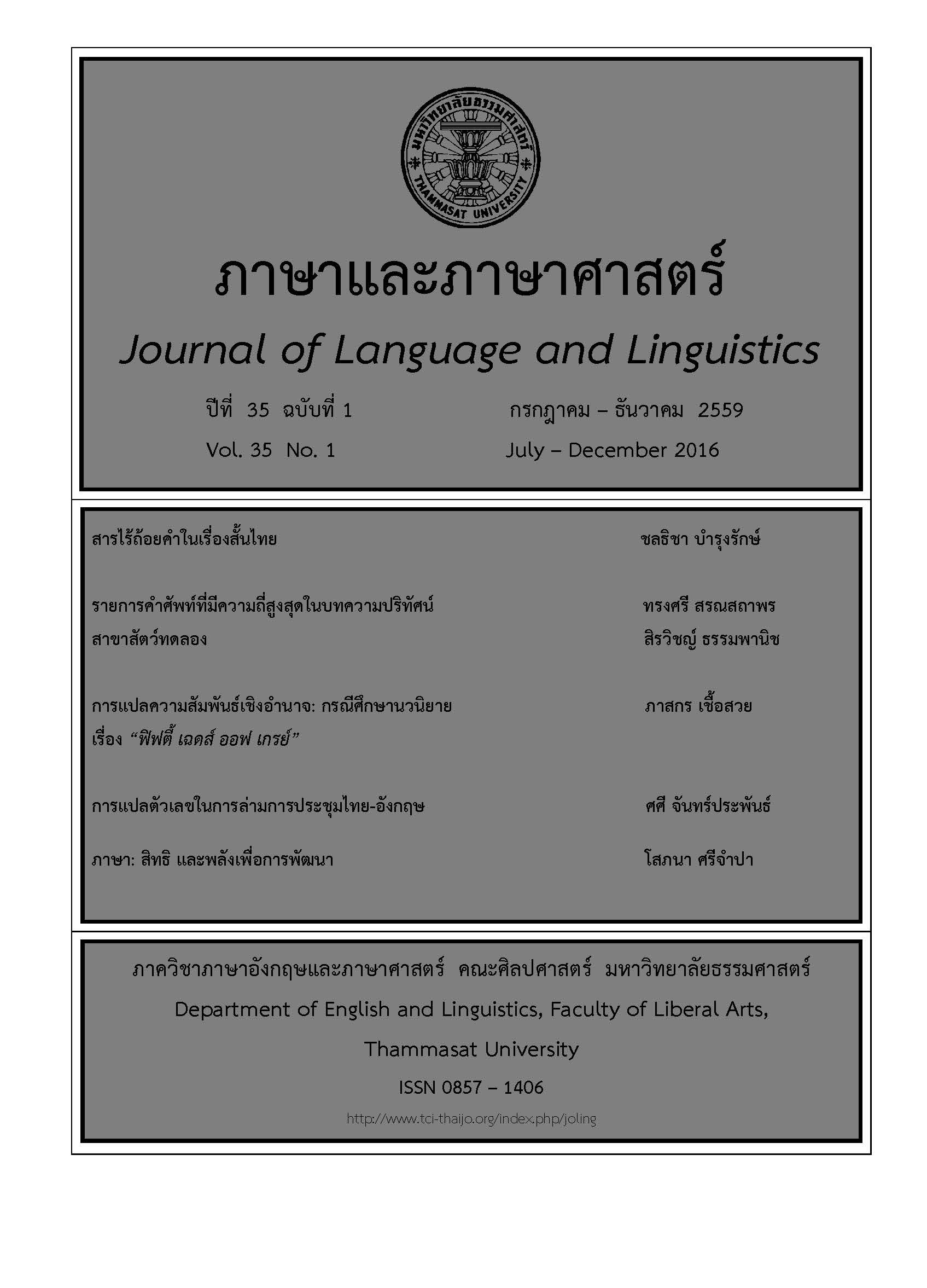การแปลตัวเลขในการล่ามการประชุมไทย-อังกฤษ -
Main Article Content
Abstract
Interpretation refers to the act of listening to a source language message and translating it orally into a target language allowing those without source language comprehension to participate in the communicative event. Present forms of interpreting include the consecutive and simultaneous modes. In consecutive interpreting, the interpreter produces an oral translation when the speaker pauses for him to do so, but in simultaneous interpreting, the interpreter and speaker both speak at the same time with a small time gap (décalage) between the production of the message by the speaker and its rendition in the target language by the interpreter. Since simultaneous interpreting allows for more convenience in that it is not as time consuming as consecutive interpreting, and the rendition can be made in many target languages at the same time, most conferences requiring interpretation that utilizes the simultaneous form where electronic simultaneous interpreting equipment carries the voices of the interpreters to the headsets of the clients who listen to the target language of their choice through the channels provided. Due to time constraints in simultaneous interpretation, the interpreter is required to employ many capabilities at the same time, he is faced with difficulties when having to interpret complex source messages such as those with complex sentence structures or numbers. This paper will analyze the causes of this problem and propose strategies to deal with it in the Thai-English simultaneous interpreting context in order to provide interpreting students, and practicing interpreters, with possible solutions.
Article Details
บทความทุกบทความเป็นลิขสิทธิ์ของภาษาและภาษาศาสตร์


